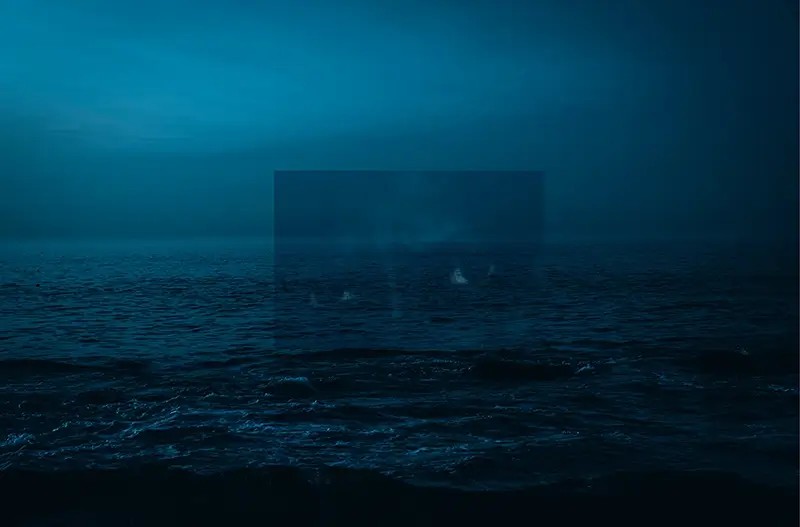The Dawn of a New Ecosystem: Third-Party Accessories Arrive for Apple Vision Pro
The launch of a new Apple product category is a seismic event in the technology world. It’s not just about the device itself, but the vast ecosystem of software and hardware that inevitably springs up around it. The Apple Vision Pro, a device heralding the era of spatial computing, is no exception. While early adopters have been exploring its groundbreaking capabilities, the crucial third-party accessory market has been quietly preparing for its own debut. Now, the first wave is here. Leading accessory manufacturers are beginning to release their initial offerings, signaling the official start of a new and exciting market. This article provides a comprehensive technical analysis of these early Vision Pro accessories, explores the design and engineering challenges involved, and looks ahead to the future of how we will protect, personalize, and enhance Apple’s most ambitious product yet. This moment is reminiscent of the early days of iPhone news, where the first cases and chargers laid the groundwork for a multi-billion dollar industry, and it marks a critical step in the Vision Pro’s journey from a niche device to a mainstream platform.
The First Wave: Unpacking the Initial Accessory Offerings
Just as the first iPhone demanded a protective case and the first iPod needed a travel charger, the Apple Vision Pro arrives with its own set of immediate needs. The initial accessories from established brands like Belkin and Spigen are not frivolous add-ons; they are practical solutions to the most pressing concerns of early adopters: protection, power management, and portability. This first wave provides a clear snapshot of the market’s priorities and the foundational pillars of the burgeoning Vision Pro accessories news landscape.
Protection as a Primary Concern: Cases and Pouches
With a starting price of $3,499 and a complex, glass-and-aluminum construction, protecting the Vision Pro is paramount. The front of the device is a single, laminated piece of glass that covers an array of sensitive cameras and sensors essential for its spatial tracking and passthrough video capabilities. A scratch or crack here isn’t just a cosmetic flaw; it’s a critical failure. Recognizing this, Spigen has introduced its Klasden Pouch, a semi-rigid travel case designed specifically for the Vision Pro. It features a molded interior to securely hold the device, the battery pack, and essential cables. The focus is on robust protection during transit, preventing damage from bumps, drops, and pressure. This mirrors the long-standing trend in Apple accessories news where protective cases are consistently the top-selling category for new iPhones and iPads.
Power Management and Ergonomics: Battery Solutions
One of the most discussed aspects of the Vision Pro’s design is its external battery pack, connected via a braided cable. While this design choice keeps weight off the user’s head, it introduces a new ergonomic challenge: what to do with the battery? Apple’s suggestion is to place it in a pocket, but this isn’t always practical or comfortable. Belkin has addressed this directly with its Battery Holder for Apple Vision Pro. This simple but ingenious accessory is a clip that securely attaches the battery pack to a belt or waistband. By providing a stable, external mounting point, it improves weight distribution, prevents the battery from pulling on the cable, and frees up pocket space. This focus on user comfort is a subtle nod to the broader themes seen in Apple health news, where ergonomics and user well-being are increasingly important design considerations in the Apple ecosystem news.
The Unseen Essentials: Lens Care and Future-Proofing
Beyond the obvious external shell, the optical components of the Vision Pro require meticulous care. The custom ZEISS Optical Inserts for prescription wearers and the internal displays are the windows to the spatial experience. We can anticipate a surge in accessories focused on their maintenance, such as specialized microfiber cloths, anti-fog solutions, and protective covers for the inserts when not in use. Similarly, protecting the large, curved front glass from micro-scratches will likely lead to the development of film protectors, though engineering one for such a complex shape without interfering with the external sensors will be a significant technical hurdle, a challenge that will drive future Apple AR news.

A Technical Deep Dive: Design, Materials, and Ecosystem Integration
Creating accessories for a first-generation Apple product, especially one as complex as the Vision Pro, is a high-stakes endeavor. It requires a deep understanding of material science, a strict adherence to Apple’s design philosophy, and a forward-looking approach to potential certification programs. The quality of these early products sets the tone for the entire market.
Material Science and Ergonomic Engineering
The choice of materials is critical. Spigen’s Klasden Pouch, for example, likely uses an EVA (ethylene-vinyl acetate) shell, a material known for its excellent stress-crack resistance and shock absorption, covered in a durable fabric. This provides a balance of rigidity for protection and a soft-touch exterior that feels premium. Belkin’s Battery Holder uses a combination of hard plastic for the clip mechanism and a softer, possibly silicone-lined, cradle to hold the aluminum battery without scratching it. The ergonomic design of the clip ensures it can be operated with one hand, a small but significant detail for user convenience. This level of detail is what separates premium accessories from generic alternatives, a lesson learned over many generations of products covered in AirPods news and Apple Watch news.
Adherence to Apple’s Design Language
Successful third-party manufacturers understand that their products must look and feel like they belong in the Apple ecosystem. This means minimalist aesthetics, precise manufacturing tolerances, and a color palette that complements Apple’s “Silver” and “Space Gray” finishes. The initial accessories we’re seeing avoid flashy logos and garish colors, opting instead for a subtle, functional design that doesn’t detract from the Vision Pro itself. This design synergy is a hallmark of the best accessories, whether for the latest device featured in HomePod news or a classic product whose fans are still hoping for iPod revival news.
The “Made for Vision Pro” (MFVP) Challenge
Looking ahead, it is highly probable that Apple will introduce a “Made for Vision Pro” (MFVP) certification program, similar to the MFi (Made for iPhone/iPad/iPod) program. This would establish a set of technical and quality standards that accessory makers must meet. For Vision Pro, these standards would be incredibly stringent. Any accessory that attaches to the device would need to be tested to ensure it doesn’t interfere with the multitude of cameras, LiDAR scanners, IR illuminators, or Wi-Fi/Bluetooth antennas. Accessories connecting to the USB-C port on the battery or a potential future port on the device itself would face rigorous testing related to power delivery, data transfer, and security. This connects directly to ongoing topics in iOS security news and Apple privacy news, as Apple will not allow any accessory to compromise the integrity of visionOS or the user’s data.
The Future Horizon: What’s Next for Vision Pro Accessories?
The first accessories are about solving immediate problems. The next waves will be about unlocking new potential, enabling deeper personalization, and expanding the very definition of what’s possible with spatial computing. This is where the market will get truly innovative, moving from necessity to enhancement.
Enhancing Input and Interaction: The Quest for Precision

While the Vision Pro’s hand-and-eye tracking is revolutionary, certain professional and creative tasks demand tactile feedback and physical precision. This opens the door for a new class of input devices. The concept of a Vision Pro wand news-worthy controller, similar to those used with other VR headsets, could provide haptic feedback and a physical anchor point for complex 3D modeling or gaming. Furthermore, the idea of an Apple Pencil Vision Pro news has captivated the creative community. Imagine a new generation of Apple Pencil that can be tracked in 3D space, allowing artists to draw, paint, and sculpt in the air with unparalleled precision. This would be a game-changer for apps like Freeform and could even inspire new ways of interacting with an iPad vision board news-style spatial canvas.
Personalization and Customization
As the Vision Pro user base grows, so will the desire for personalization. We can expect to see a vibrant market for custom accessories that allow users to express their individual style. This could include:
- Custom Head Bands: Swappable bands in a variety of colors, materials (like leather or performance fabrics), and designs.
- Light Seal Cushion Covers: Washable, hygienic covers for the Light Seal Cushion, perhaps in different materials for enhanced comfort.
- Decorative Skins: High-quality vinyl skins for the external battery pack and potentially even parts of the headset’s aluminum frame, allowing for complete personalization without adding bulk.
This trend follows the history of every major Apple product, from the colorful cases of the iPod Mini and iPod Nano to the vast array of bands for the Apple Watch.
Expanding Functionality: Docks, Mounts, and Enterprise Solutions
The next frontier for accessories will be in expanding the device’s core functionality. We can anticipate elegant charging docks that not only charge the battery but also display the Vision Pro as the piece of high-tech sculpture it is. For enterprise users, the possibilities are even broader. We could see specialized head strap systems with integrated hard hats for construction sites, sterile mounting solutions for operating rooms, or quick-swap battery systems for all-day use in a commercial setting. These accessories will be key to driving adoption in professional fields, much like rugged cases and keyboard folios did for the iPad.
Practical Considerations for Early Adopters
For those who have already invested in a Vision Pro, the arrival of third-party accessories presents a new set of choices. Navigating this nascent market requires a thoughtful approach to ensure you’re enhancing, not hindering, your experience.
To Buy Now or Wait?
The decision to purchase first-generation accessories depends on your immediate needs. If you plan to travel frequently with your Vision Pro, investing in a quality protective case like Spigen’s is a prudent choice. Similarly, if you find the battery placement cumbersome, Belkin’s holder is an immediate quality-of-life improvement. However, it’s also wise to acknowledge that this is just the beginning. The market will mature rapidly, and waiting a few months will undoubtedly bring more options, competitive pricing, and potentially more refined designs. There is no right answer, but a needs-based assessment is the best strategy.
Identifying Quality and Avoiding Pitfalls
When evaluating new Vision Pro accessories news, prioritize quality and brand reputation.
- Stick to Known Brands: Companies like Belkin and Spigen have years of experience working within the Apple ecosystem and are a safer bet than unknown sellers.
- Check for Obstruction: Carefully examine any accessory that attaches to the headset itself. Ensure it does not block any of the black sensor windows, microphones, or thermal vents. Obstructing these could degrade performance or even cause the device to overheat.
- Read Reviews: As more users get their hands on these accessories, look for in-depth reviews and video demonstrations to see how they perform in real-world scenarios.
Conclusion: The Ecosystem Is the Experience
The debut of accessories from major players like Belkin and Spigen is more than just a product launch; it’s a vote of confidence in the future of the Apple Vision Pro. These initial products, focused on the essential needs of protection and ergonomic comfort, are the foundational layer of a new ecosystem. They pave the way for a future filled with innovative input devices, deep personalization options, and powerful functional enhancements that will help spatial computing reach its full potential. The evolution of this accessory market will be a key indicator of the Vision Pro’s trajectory and its integration into our daily lives. Just as the iPhone’s success was amplified by its vast accessory ecosystem, the long-term impact of the Vision Pro will be defined not only by what’s in the box, but by the universe of innovation that grows around it.











